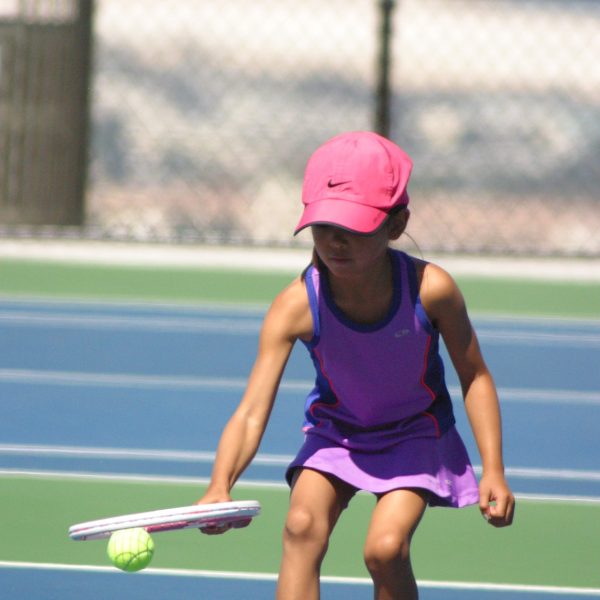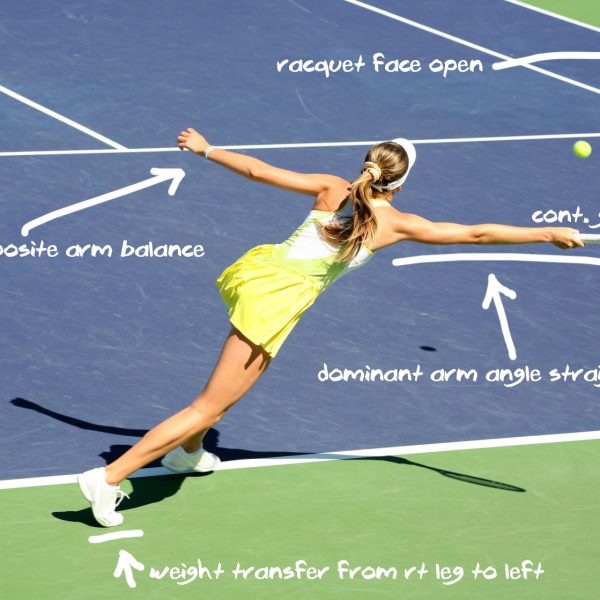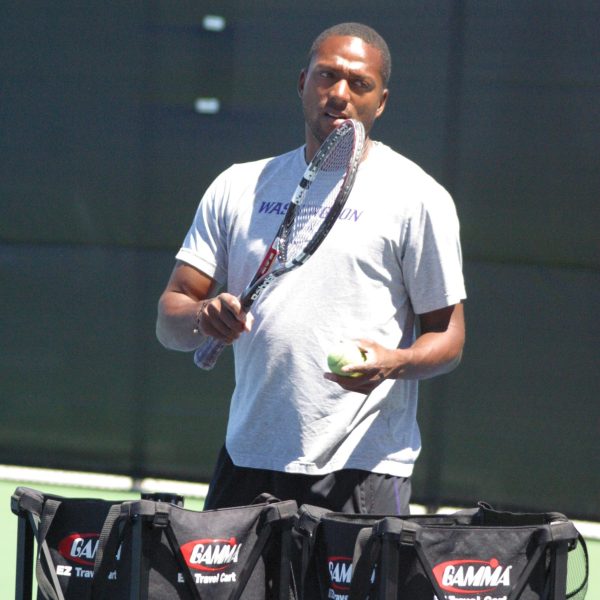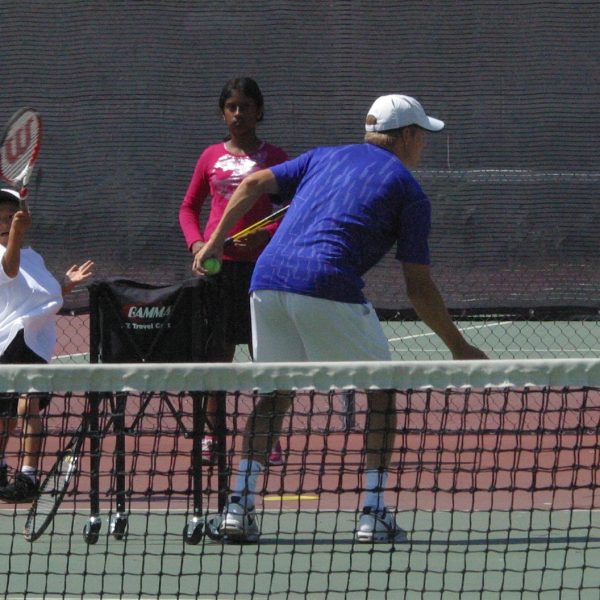Our Program
What separates champions from 'almost champions'?
Fascinating new research helps explain why some keep going when others quit.
by Brad Stulberg. Published in Personal Growth and New York Magazine
Great athletes are fascinating. It’s a thrill to watch the very best of the very best. And though your natural abilities (or lack thereof) may prevent you from becoming as good as the champs, you can improve yourself by emulating their behavior. And yet there’s an overlooked group that is worth your attention, too, if for a very different reason: the almost greats, those who were once good enough to play with the best of the best, but ended up in second-rate leagues.
It’s the perennial million-dollar question of nature versus nurture, sure. But the difference between the greats and the almost-greats (which, by the way, applies well beyond sports) also appears to be at least partially driven by one specific thing — how each group responds to adversity. The greats rise to the challenge and put in persistent effort; the almost-greats lose steam and regress.
For a recent study published in the journal Frontiers in Psychology, talent development researchers Dave Collins, Áine MacNamara, and Neil McCarthy examined the differences between athletes who overcame adversity and went on to become world-class (what they call super champions) and those who struggled in the face of hardship (the heartbreakingly named “almost champions”). Whereas super champions were playing in premiere leagues and/or competing on national teams (think: Olympics), almost champions had achieved well at the youth level but were playing in less prestigious leagues as adults.
The researchers found that super champions were characterized by an almost fanatical reaction to challenge.” They viewed challenges in a positive light — as opportunities to grow — and overcame them thanks to a “never satisfied” attitude. This runs in contrast to almost champions, who blamed setbacks on external causes, became negative, and lost motivation. Although athletes in each group faced comparable challenges, the researchers write, their responses — “what the athletes brought to the challenges” — were quite distinct.
These responses, of course, are the product of personal histories, histories that turned out to be similar amongst athletes in the same group but patently different between groups. By examining these differences, we can learn how to cultivate unwavering effort — a “never satisfied attitude” that gains strength from failure — in ourselves and in others.
Follow your interests. Starting in their youth, super champions showed great interest in their respective sports. They enjoyed not only competing in matches, but also practicing and training. Super champions did notspecialize in a single sport during their early childhood. Rather, they were given latitude to explore diverse activities. (A paper published in the journalPediatrics earlier this month supports this notion, stating that later specialization is best for health and performance. Other studies show early specialization doesn’t work in athletes; nearly 90 percent of 2016 NFL draft picks played multiple sports in high school.)
Almost champions also loved the thrill of competition, but they remembered having an aversion toward practice and at times felt forced to pursue their respective sport. As one almost champion put it: “I loved fighting, but the training was just a chore. I would miss it if I could, and always avoided the bits I was shit at.”
The best goal is also the simplest: Get better. Super champions were driven from within. Their primary concern was self-improvement. They held themselves to high standards, but judged themselves against prior versions of themselves, not against others.
Almost champions, however, were focused on external benchmarks, like national rankings or how they compared to rivals, a mind-set the researchers speculate explains why almost champions got discouraged during rough patches.
If you’re a parent, be supportive but not obsessive. “My parents were not really pushy,” explained one super champion, whose response was representative of her peers. “It was a kind of gentle encouragement …they didn’t get [overly] involved. They’d just come and watch me, support me. But they never wanted to know what I was doing training-wise and never got involved in that way, and that helped.”
The parents of almost champions, however, were an ever-present factor, hovering over their every move. “My parents, my dad especially, was always there, shouting instructions from the touchline, pushing me to practice at home,” remembers an almost champion. “Really, I just wanted to be out there with my mates. I felt like sport stole my childhood.”
Seek empowering, lasting mentorship. The coaches of super champions were empowering and “mostly seemed to take a longer-term perspective,” the researchers wrote. This differs from the experience of almost champions, who remember their coaches as more focused on immediate results, “often seeming to drive the bus more than the performer.” No surprise, then, that almost champions changed coaches frequently whereas super champions maintained long-term relationships.
Yes, this is only one study, and only of athletes (54 of them, to be exact), but its findings support other psychological research, as well as the theory that “talent needs trauma.” In short, it goes like this: Individuals who have faced adversity and faltered in the past are more likely to show persistent effort and reach the top in the future. This is true in sports, but also in business, where a similar mind-set is gaining traction. Companies are increasingly seeking out individuals who have failed in the past and recruiting them to run high-profile projects. Take, for example, Amazon, which recently hired the executives of Webvan — a grocery-delivery service that went bust in 2001 — to run AmazonFresh. In a letter to shareholders, Amazon CEO Jeff Bezos wrote, “Failure comes part and parcel with innovation.”
It’s true that not everyone can be a world-class performer. Yes, effort counts — the psychologist Angela Duckworth, who rose to fame for her pioneering research on “grit,” argues that effort actually counts twice: Talent times effort equals skill, she says, and skill times effort equals achievement. But of course our inherited traits still matter, too; and in a paradoxical twist, even our willingness to exert persistent effort may be at least partially genetic. Some of us are born with lower sensitivity to the feel-good neurochemical dopamine, which is widely known to underpin desire. Dopamine isn’t released when we achieve a goal, but rather, when we are pursuing one. It follows that the more dopamine we need to feel satiated, the more likely we are to remain eternally hungry.
Even so, research suggests that only a minority of our personality is inherited. Not to mention, the same urge for dopamine that spawns productive motivation can also lead to destructive addictions. In other words, when it comes to drive and determination, dopamine may be a factor, but it’s one of many and only useful if harnessed and pointed in the right direction, as super champions are able to do.
The best artists, athletes, and entrepreneurs hold themselves to high standards, but judge themselves against prior versions of themselves, not against others.
World-class performers, then, don’t rely on either nature or nurture, but on a combination of the two — and they are really good at nurturing their nature. All of which suggests the recipe that gives rise to super champions is worth emulating: Individuals who demonstrate persistent effort follow their interests; practice foremost to get better, not to outdo others; derive satisfaction from within; and feel constantly supported, but not pressured, in their journey toward achievement. If these criteria are in place, experiencing failure doesn’t weaken motivation — it bolsters it. In the words of Dr. Michael Joyner, an expert on human performance at the Mayo Clinic, “With enough persistent effort, most people can get pretty good at anything.”
Thanks for reading. If you found this interesting and want more, follow me on Twitter @Bstulberg and check out my new book, Peak Performance: Elevate Your Game, Avoid Burnout, and Thrive with the New Science of Success.
Brad Stulberg writes about health and the science of human performance. He’s a columnist at Outside Magazine and New York Magazine.
Note: This piece first appeared with New York Magazine’s Science of Us.
our training process
tailored to the committed player
Our students and clients receive much more than what a standard tennis-instruction program would offer. This is an environment focused on the quality of training, not the quantity of students or coaches. Below you’ll find a brief overview of the training process and some additional information of what our personalized sessions entail.
1. Goal Setting
We don’t just talk about goals, we write them down in our player handbooks and review them all the time. Students learn the difference between Performance Goals vs Outcome Goals and a written plan is created, followed and reviewed.
2. Training
We focus on the 5 pillars of tennis training: Technical, Tactical, Physical, Mental and Nutritional. We know that the key to success is hard work, dedication and mastery in each pillar to be able to maximize a player’s potential.
3. Execution
Utilizing the learned skills from training in competitive situations is critical to success in this sport. Students learn how to deal with pressure and how to make prudent split-second decisions in various situations throughout match play.
4. Achievement
Students learn that they cannot control Outcome Goals, they can only give themselves the best possible chance of winning by focusing on their Performance Goals, strategies and tactics while playing high-percentage tennis.
need more info?
how can we help you?
Instruction
Customized age-appropriate tennis lessons tailored to achieving the player's desired goals.
Assessments
Initial as well as ongoing assessments of the player's needs and skills.
Technique
Technical analysis and training to develop the most effective and efficient strokes along with proper footwork and movement on the court.
Strategy & Tactics
Strategic and tactical analysis with drills, games, exercises and training for the competitive tournament player.
Planning
Development of tournament schedules and tournament advice for competitive players of every level.
Conditioning
Physical conditioning that includes aerobic, strength and plyometric exercises to enhance the player's on-court abilities and improve their agility, speed, footwork, balance and stamina.




No sport in the world trains its athletes the same as it did 20 years ago.
In keeping with this philosophy, we are committed to the challenge and obligation to provide our students with the highest-quality information and training techniques.
To achieve those goals, we use every tool available to us, giving our students the individual attention required to develop their playing styles while maximizing their enjoyment and success.
Resources
helpful links for players & families
- Tennis Maps Plug in your address or zip code and Tennis Maps will spit out a map with a ton of icons indicating tennis courts in your area! It even tells you whether the courts are lighted, have a backboard, are public or private, how many courts there are, if they have a tennis pro, and more!
- PlayTennis With PlayTennis, you can find a tennis partner by zip code. You can also find coaches, courts, clinics and even tennis stores. To contact players, you need to sign up, which is free.
- Global Tennis Network GTN helps you connect with other tennis players and lets you search tennis courts in your area. You can find tennis leagues, ladders and tournaments on the Global Tennis Network as well.
- Tennisopolis This is a huge network of over 51,000 tennis players from around the globe. You can join for free to view the profiles of other members. There are also over 750 tennis partner groups on the site.
- Tennis Round Easily find hitting partners by skill level near your area with Tennis Round. You can search their database according to NTRP rating and connect with other members via text messages and email. Other features include reporting scores, accumulating points and viewing results of members.
- Fuzzy Yellow Balls YouTube Channel Will Hamilton has put together a bunch of great instructional videos that break down stroke mechanics in an easy-to-understand fashion. Will is a great instructor with tons of free and paid instructional videos to view.
- SwingVision This is an app that records your matches/play and provides personalized stats and scoring. You can watch a 2 hour match in 30 min and share it instantly with anyone. Play like the pros with the line calling feature from your watch and never argue over a line call again!
- Essential Tennis Instruction Ian Westermann is another great online tennis course creator. He has a lot of well-produced and helpful videos which will assist you with your tennis needs. He also has a lot of entertaining and funny clips on his YouTube channel.
- USTA Player Development The USTA has added more resources for coaches, parents and players on their website, along with a podcast and frequent webinars with pro players as featured guests.
- USTA Parent Resources This is a direct link to the section on the USTA’s player development website. It’s free for anyone to access and it includes in-depth articles on topics ranging from beginning tennis to injury prevention.
- Tennis Psychology Podcast Hosted by Dr. Patrick Cohn, the podcast focuses on the mental game. Episodes are five minutes or less and provide exellent tips on keeping composure, staying focused and competing effectively.
- Essential Tennis Podcast Ian Westermann has over 240 episodes containing expert advice on all aspects of tennis. His episodes are solo-format and are usually done in under twenty minutes, which is great for people who like shorter podcasts.
- Served with Andy Roddick Podcast A relatively new tennis podcast hosted by former world #1 Andy Roddick. It’s an interesting perspective and fresh look at tennis from a top American tennis pro who’s seen everything.
- Winston Du’s YouTube Channel Winston provides a terrific, in-depth perspective on what it’s like to be an amateur tennis player competing against junior phenoms, world ranked pros and everything in between.
- My Tennis HQ YouTube Channel Karue Sell is a former top 400 ATP player and collegiate standout. His videos provide terrific insights and are very entertaining at the same time. You can see how a player of his level plays against Taylor Fritz and others!
- Tennis Consult A terrific blog that has been around for years, Tennis Consult features in-depth articles from many of the game’s greats, including Dr. Allen Fox, Allistair McCaw, David Mullins, Todd Widom and more. We highly recommend checking it out!
- Pro Stock Tennis This is an online tennis store selling rare, pro-stock tennis racquets (new and also used by top touring pros). If you’re a racquet nerd or a collector, you will love browsing this site.
- Talk Tennis Warehouse The TW forums are filled with knowledgeable and passionate members, well-structured categories and helpful posts. There are all sorts of threads from pro tennis, equipment, collegiate tennis and instruction.
- Tennis Forums/Men’s Tennis Forums If you’re a pro tennis junkie, then these two sites are for you. They are both frequently updated with discussions about the latest pro tournaments and opinions of the players. A lot of the mental game is discussed here as well.
- eatsleep.fit This is a unique perspective on the nutritional and coaching side of tennis. From fighting the heat to preparation during rain delays, you can get valuable insights on how to get the best performance from your body.



